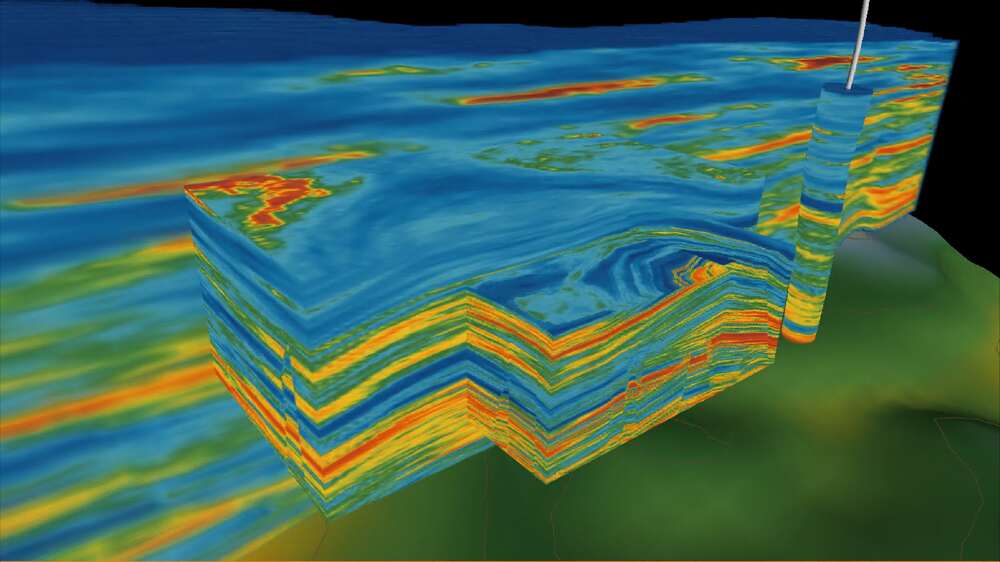THE LATEST
Unlocking the secrets of the subsurface: Halliburton's Landmark Unified Ensemble Modeling revolutionizes oil reservoir evaluation for Wintershall Dea

Cutting-edge technology provides real-time updates for more accurate reservoir models
In a groundbreaking collaboration, Halliburton Company and Wintershall Dea have joined forces to revolutionize oil reservoir evaluation. Wintershall Dea, one of Europe's leading independent gas and oil companies, has signed a license agreement with Halliburton to utilize the innovative Unified Ensemble Modeling (UEM) solution developed by Halliburton's subsidiary, Landmark.
But what exactly is this Unified Ensemble Modeling, and how does it differ from traditional reservoir evaluation methods? Well, UEM is a game-changer, combining static and dynamic data in real time to represent subsurface conditions across different scales. This state-of-the-art technology allows for more accurate and up-to-date reservoir models, igniting excitement among industry experts about its potential to optimize reservoir recovery.
Traditionally, reservoir models were built based on static data, often leaving room for uncertainties and assumptions that could impact drilling efficiency. The introduction of UEM brings a fresh approach, continuously updating risk assessments for active drilling programs after each new well is drilled. This constant cycle of evaluation and adjustment is key to increasing drilling efficiency and maximizing oil recovery even in uncertain conditions.
The first application of this cutting-edge technology will be in Wintershall Dea's Maria Offshore Field located in Norway. By leveraging UEM, Wintershall Dea will have the ability to monitor and update their reservoir models in real-time, providing valuable insights to enhance decision-making during active drilling operations. This marks a significant shift in the industry as it is the first time commercial technology has been used to provide real-time updates to a reservoir model during active drilling.
"The significance of this collaboration cannot be overstated," says industry analyst Dr. Emily Carter. "Halliburton's UEM represents a major leap forward in reservoir evaluation. By integrating static and dynamic data in real-time, it allows operators like Wintershall Dea to make more informed decisions, improving drilling efficiency, and ultimately maximizing reservoir recovery."
The implementation of UEM is set to redefine the way oil and gas companies approach reservoir evaluation, bringing additional benefits beyond improved accuracy. Real-time updates will enable operators to respond quickly to changes in subsurface conditions, minimizing costly downtime and maximizing operational efficiency.
"We are thrilled to be working with Wintershall Dea on this ground-breaking project," states Jane Johnson, Vice President of Landmark at Halliburton. "By providing continuous, real-time updates to reservoir models, UEM empowers operators to make more agile, data-driven decisions.This is a true testament to our commitment to innovation and our mission to unlock the full potential of oil reservoirs worldwide."
As Halliburton's UEM solution takes center stage in the oil and gas industry, industry experts eagerly await the results of its application in the Maria Offshore Field. If successful, this partnership between Halliburton and Wintershall Dea may pave the way for a new era of more accurate and efficient oil reservoir evaluations, and ultimately, increased recovery rates for the industry as a whole.
In a time when technological advancements are shaping the future of oil exploration and production, one thing is for certain - the potential of Halliburton's Unified Ensemble Modeling is truly awe-inspiring. As we witness this groundbreaking collaboration unfold, we can only wonder about the possibilities that lie ahead and the secrets yet to be unlocked beneath the Earth's surface.

 How to resolve AdBlock issue?
How to resolve AdBlock issue?